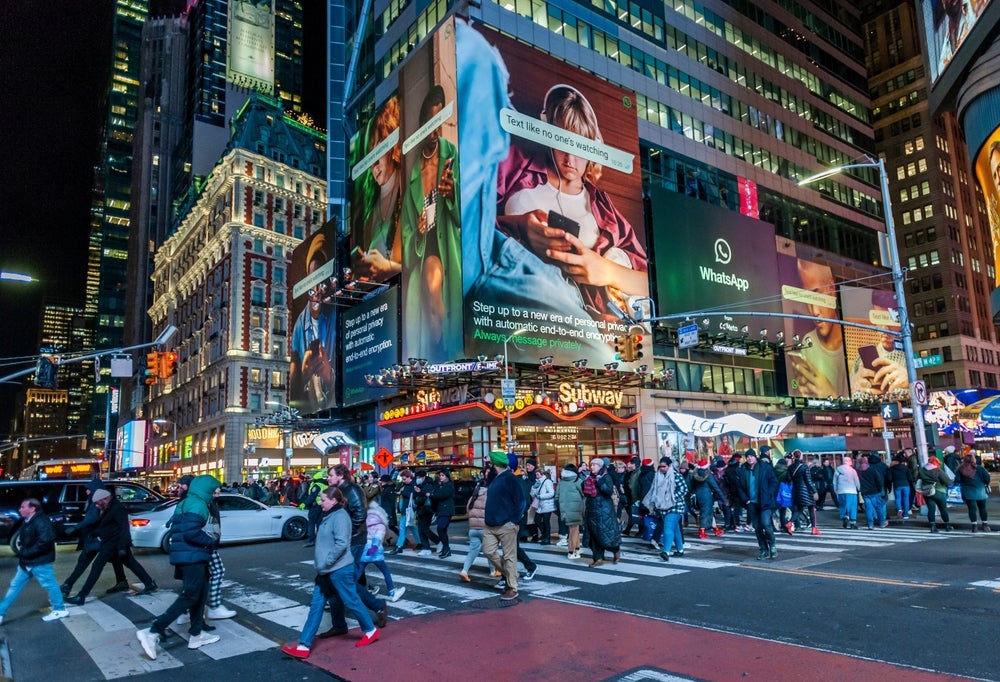A previous Verdict article discussed the hidden risks of touchscreen infotainment systems in cars, but there’s another screen drivers might not realise is endangering them: the digital advertising billboard.
Digital billboards are a rapidly growing section of the marketing industry. Most famously, these gigantic signs can be seen in Times Square, New York, but they’re increasingly popping up on our roadsides. Road authorities and local governments have much to gain, both financially and in the form of brownie points for ‘digitising their urban infrastructure’. But the real cost is driver safety.
The proliferation of digital billboards
Several studies have shown that digital billboards are more distracting for drivers than paper alternatives. Their dazzling lights and fast-changing images, such as when one ad rotates to another, make it difficult for drivers to avoid their eyes being drawn to them. One team of Swedish researchers found that, on average, when drivers look at digital signs, they do so for more than two seconds, which is significantly more time than traditional billboards. And they’re looking at them much more frequently.
In the UK, 40% of car accidents occur because ‘the driver failed to look properly.’ This is twice as many as the next biggest cause—that ‘the driver failed to judge another person’s path or speed.’ If we can do something to mitigate this, we should.
It is also worth noting that some digital billboards breach road regulations. For example, in the UK, digital billboards were filmed in Leeds displaying moving images despite this being banned. Digital billboards are also vulnerable to cyberattacks. Hackers that take control of digital signage could cause major traffic incidents or even accidents. There’s also an environmental concern—the digital billboards recently proposed by one council in Sheffield, England, consume an estimated 63kwh per day, or the same as six average UK homes.
Worse, advances in state-of-the-art LED and LCD screens are allowing these billboards to run more brightly than ever, increasing visibility—and distractibility—during daytime. Taiwanese LCD firm Litemax Electronics, for example, has pioneered an LCD they claim offers three times the brightness of average indoor LCD screens. The company now wants to target Europe’s outdoor advertising market, hoping to ride the smart city trend of digitalised infrastructure.

US Tariffs are shifting - will you react or anticipate?
Don’t let policy changes catch you off guard. Stay proactive with real-time data and expert analysis.
By GlobalDataA future of distraction
The biggest issue is that these billboards work. They’re eye-catching, and they capture drivers at a unique time when they’re actively scanning for information and signage. For brands, they’re pretty much the apex of roadside advertising.
And as ever-more aggressive marketers seek to monopolise as much consumer attention as they can, it’s not unlikely these billboards will become better at distracting us—for instance, with content designed to be viewed while at speed. The opportunity size is huge—in the US, it’s estimated that there are at least half a million billboards of all types along freeways, while 46 states have passed laws permitting digital billboards. Unless regulatory bodies or relevant authorities take a firmer stance on these billboards, what’s to stop them spreading? If our roads are considered fair play, one thing’s clear: we’re being taken for a ride.









